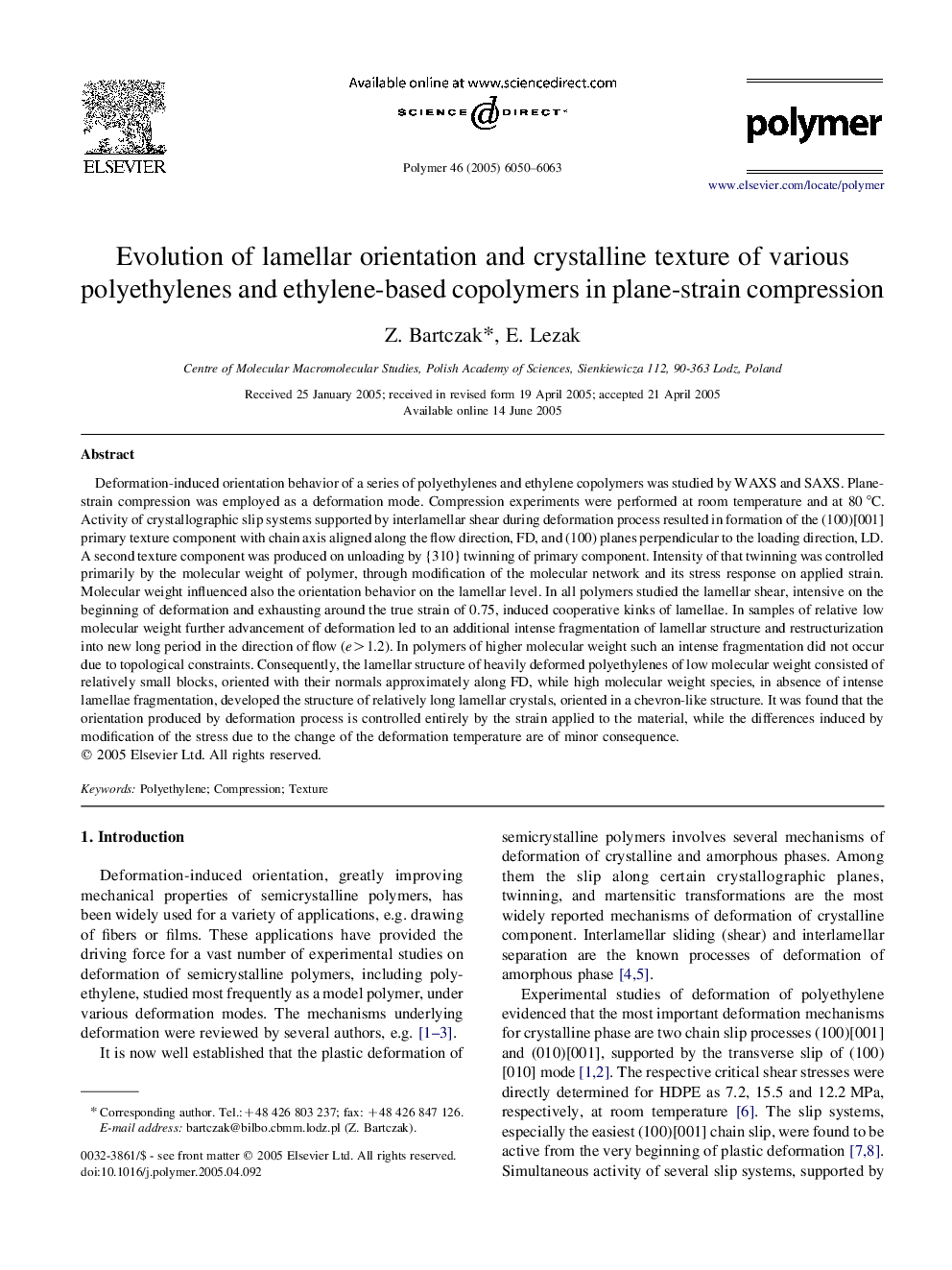| Article ID | Journal | Published Year | Pages | File Type |
|---|---|---|---|---|
| 5191460 | Polymer | 2005 | 14 Pages |
Abstract
Deformation-induced orientation behavior of a series of polyethylenes and ethylene copolymers was studied by WAXS and SAXS. Plane-strain compression was employed as a deformation mode. Compression experiments were performed at room temperature and at 80 °C. Activity of crystallographic slip systems supported by interlamellar shear during deformation process resulted in formation of the (100)[001] primary texture component with chain axis aligned along the flow direction, FD, and (100) planes perpendicular to the loading direction, LD. A second texture component was produced on unloading by {310} twinning of primary component. Intensity of that twinning was controlled primarily by the molecular weight of polymer, through modification of the molecular network and its stress response on applied strain. Molecular weight influenced also the orientation behavior on the lamellar level. In all polymers studied the lamellar shear, intensive on the beginning of deformation and exhausting around the true strain of 0.75, induced cooperative kinks of lamellae. In samples of relative low molecular weight further advancement of deformation led to an additional intense fragmentation of lamellar structure and restructurization into new long period in the direction of flow (e>1.2). In polymers of higher molecular weight such an intense fragmentation did not occur due to topological constraints. Consequently, the lamellar structure of heavily deformed polyethylenes of low molecular weight consisted of relatively small blocks, oriented with their normals approximately along FD, while high molecular weight species, in absence of intense lamellae fragmentation, developed the structure of relatively long lamellar crystals, oriented in a chevron-like structure. It was found that the orientation produced by deformation process is controlled entirely by the strain applied to the material, while the differences induced by modification of the stress due to the change of the deformation temperature are of minor consequence.
Keywords
Related Topics
Physical Sciences and Engineering
Chemistry
Organic Chemistry
Authors
Z. Bartczak, E. Lezak,
